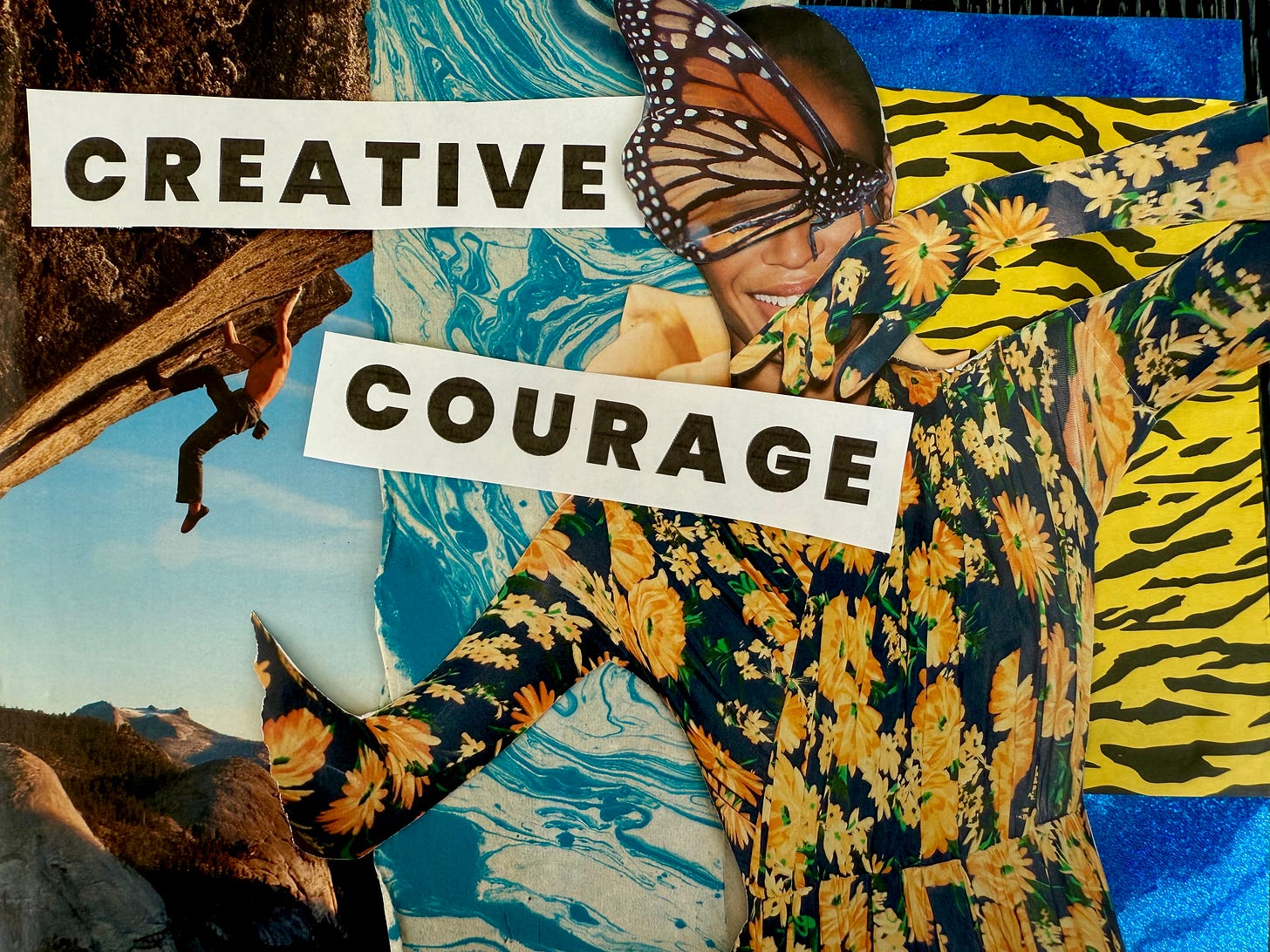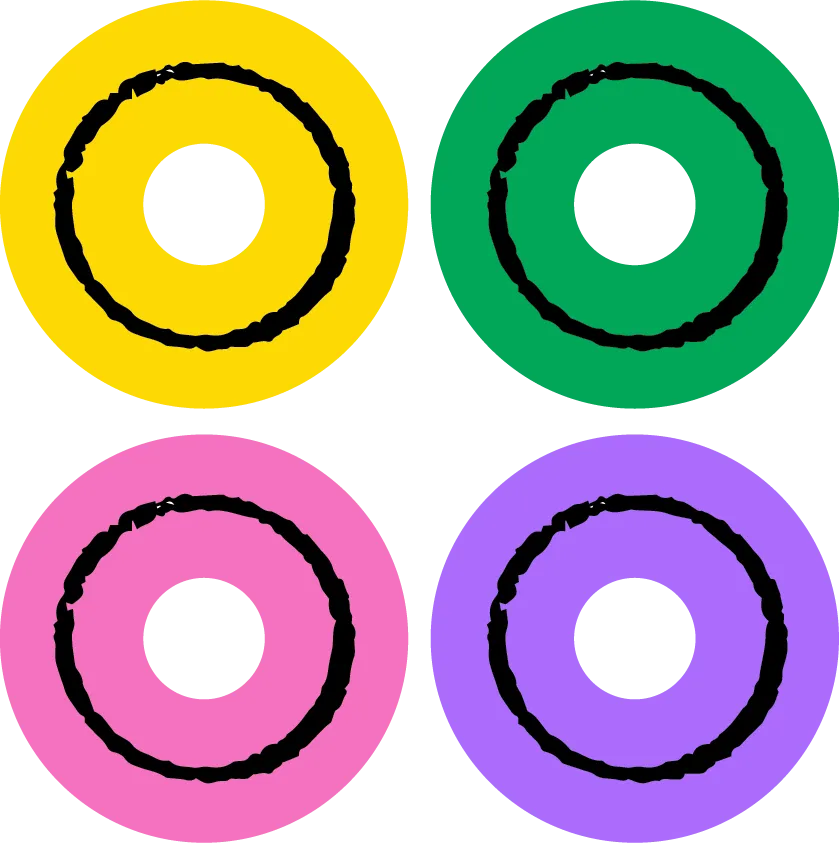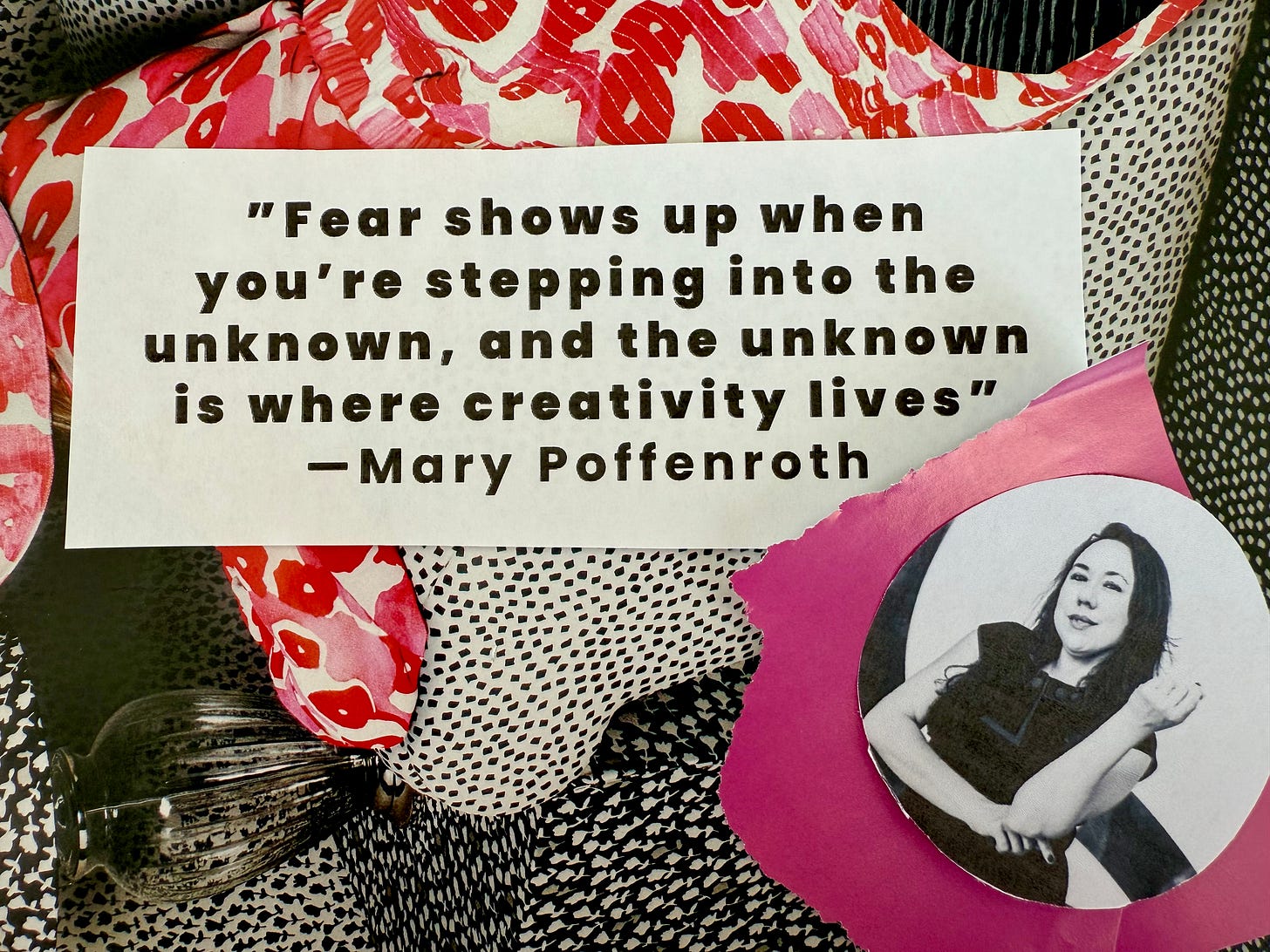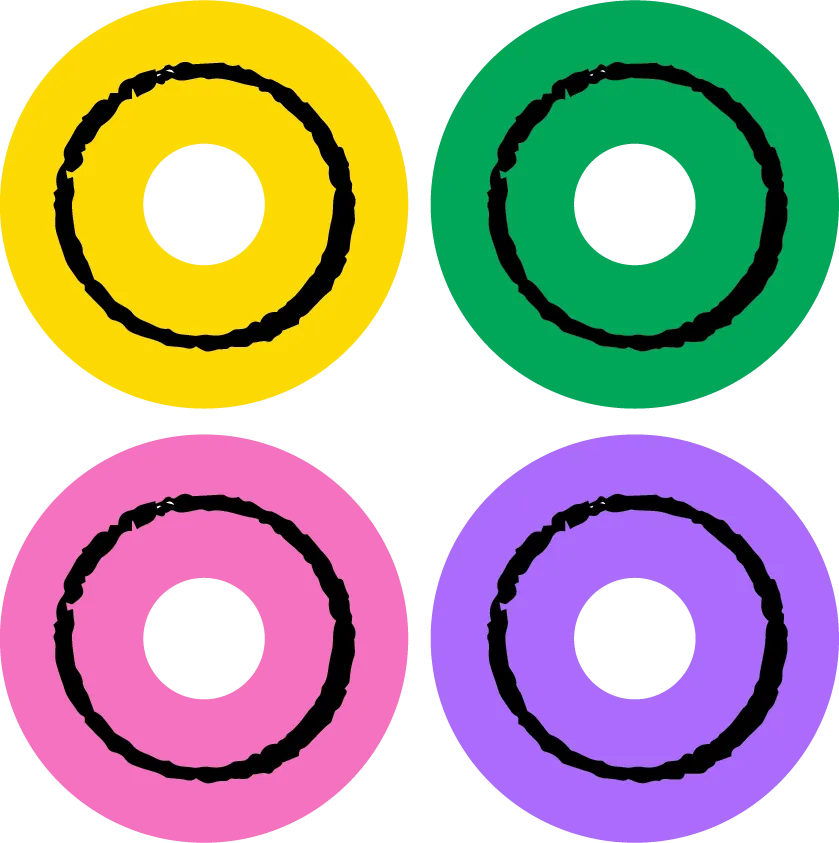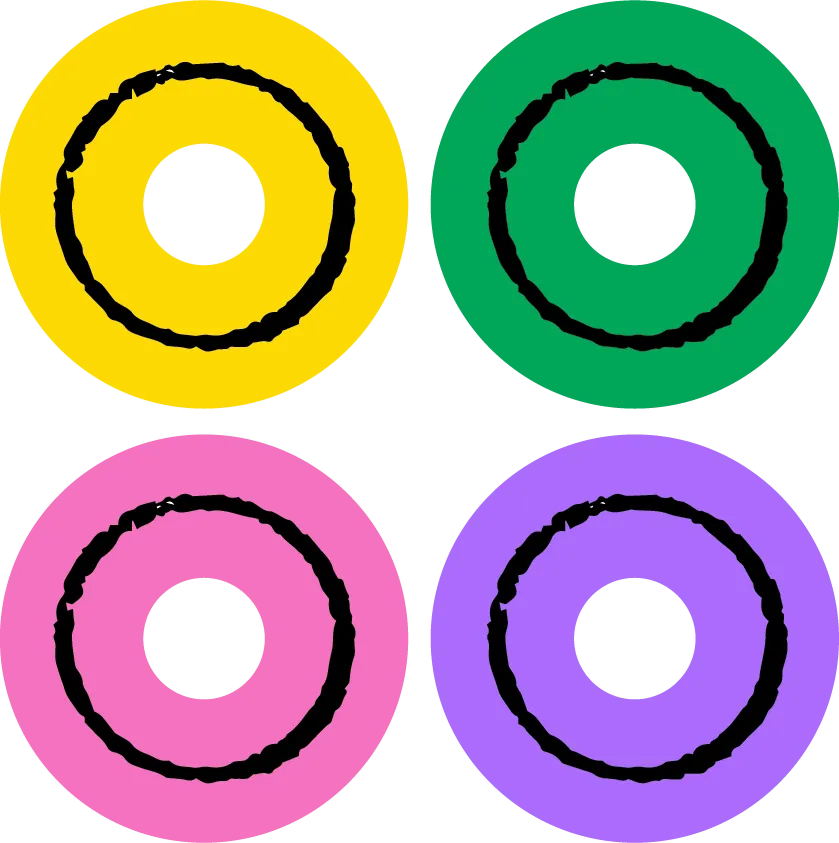“Creativity takes courage” — Henri Matisse
This week my brain got swept up in a fear flurry (no cookies mixed into this one). Within the swirl, I keep anchoring myself to what I know for sure: creativity matters most when things get chaotic and playfulness is an antidote to the zero-sum meanness that’s blustering around.
But how do we keep making art, building creative businesses, or pursuing wild ideas when uncertainty looms large? How do we create when we’re paralyzed by fear?
To help answer this, I talked to fear and courage expert Mary Poffenroth, Ph.D. Mary is a neurohacking biopsychologist with three master’s degrees and a PhD in psychology who recently published her book Brave New You which is full of courageous stories and fear-fighting strategies.
I was particularly drawn to Mary because, like me, Mary is a play nerd who helps groups navigate both challenges and opportunities. When I asked her how to play with fear she shared: “Playing with fear is about shifting your mindset from fear as an enemy that must be vanquished to fear as a lifelong game that can be mastered.” She gets the Playful Way.
We dug into why you biologically can't be creative when you're in fear mode, why "just be fearless" is terrible advice, and some surprisingly simple techniques to hack your nervous system when things feel overwhelming. Whether you're wrestling with creative blocks or trying to stay grounded in chaotic times, Mary has insights and practical tips to help you move forward — not fearlessly, but courageously. Read on brave Noomie!
Mary’s 4321: Four Lessons, Three Practices, Two Questions, One Rallying Cry for Facing Fear
Four Lessons
1. Your Brain on Fear (is Not Creative)
“You biologically can’t be creative when you are afraid.” Mary told me. She shared how if the brain’s fear center, the amygdala, gets fired up, it shuts down the brain’s creativity center, the prefrontal cortex. As a species, we evolved this fear response to keep us alive, but modern life often results in misfires. The brain perceives something as hazardous when, in fact, it is relatively benign or simply something new.
It’s easy to be trapped by the amygdala’s machinations when doing new or hard things unless you have methods to calm your mind, like the neurohacks I teach. Fear isn’t an insurmountable obstacle you must live at the mercy of, you just need the right tools to navigate through those totally normal sensations.”
2. You Can Face Fear the Playful Way
“My favorite is to see fear — this big, sometimes overwhelming emotion — as an opportunity to experiment and to play.”
“Playing with fear is about shifting your mindset from fear as an enemy that must be vanquished to fear as a lifelong game that can be mastered. But just as a chess master doesn’t stop playing chess once mastery has been achieved, none of us will stop feeling the very human emotion of fear.”
”Plus, fear can signal that you’re on the edge of something meaningful.”
“That little flutter in your chest? It’s not just nerves—it’s potential because fear shows up when you’re stepping into the unknown, and the unknown is where creativity lives, so bravely following that little flutter can grow your creativity to new heights.”
”Playing with fear is about shifting your mindset from fear as an enemy that must be vanquished to fear as a lifelong game that can be mastered.”
— Mary Poffenroth, PhD
3. Creative Fears are Normal!
The biggest myth about fear is the myth of fearlessness.
“Creating something that has never existed before is really scary, especially when you care deeply about it.” Mary explains. “A healthy dose of fear can keep you dedicated. But like most things, it’s about balance. Too much fear keeps you frozen, too afraid to take the risks needed to grow. Zero fear – where you are so comfortable in everything you do that it becomes boring.”
The most common creative fears Mary encounters are:
Fear of Judgment: Our brains are wired to seek approval and avoid rejection. In our social media world it’s even more intense. Sharing vulnerable work can feel terrifying to your brain. But this vulnerability is exactly what makes art powerful and connects with others.
Fear of Uncertainty: In a world that feels increasingly unpredictable, uncertainty can feel overwhelming. But embracing uncertainty, whether in art or life, helps us stay flexible and discover unexpected possibilities. The very things that make uncertainty scary are what make it fertile ground for creativity and change.
Fear of Success: “Fear of failure may seem obvious, but we can also fear success.” Sometimes success feels scarier than failure. Higher expectations can trigger imposter syndrome and anxiety about maintaining standards.
“Just be fearless” isn't just bad advice - it's impossible. We're not broken for feeling fear; we just need better ways to work with it.
“Creativity is driven by curiosity, so why not apply that powerful curiosity
to fear?” —Mary Poffenroth, PhD
4. When You Get Curious About Your Fear You Can Make It A Friend
“Having spent my entire career in the sciences, I approach fear like a researcher. From the field to the lab, scientists use trial and error to find what works and what doesn’t. So, I see this big, sometimes overwhelming emotion as an opportunity to experiment. Through every success and every failure, something is always learned and I stay motivated to keep trying again and again.”
“Creativity is driven by curiosity, so why not apply that powerful curiosity to fear?”
Next time you find yourself wrestling with a fictional fear, ask yourself, ‘What is this fear trying to protect me from?’ Your amygdala is like an overprotective friend—it wants to keep you safe but doesn’t always realize you don’t need rescuing. When you get curious instead of combative, fear can be a friend instead of a foe.”
Three Questions
1. Is It Fact or Fictional?
“Fear can be divided into two buckets: factual and fictional. Factual fears arise from real, immediate threats (like when I ran from a black bear carrying a pizza). Fictional fears, on the other hand, live in the stories we tell ourselves like ruminations about failure, judgment, or the unknown.”
“When fear-driven sensations come up, ask: am I experiencing a factual fear or a fictional one? By labeling your fear, you take the first step in reclaiming control. If it’s factual, take action to protect yourself.” Keep reading for practices!
2. What’s Its Name?
“The second question to ask is: what single name, other than fear or stress, can I assign this sensation? Choosing just one label in the moment can help prevent our fear from spiraling out of control.”
3. What’s The Root?
“Last but not least, ask: is this trigger rooted in my fear of not being enough or in my fear of losing control? Although humans have complex experiences that can make this step hard to choose just one, picking just one of these two that are at the heart of pretty much all human fictional fears helps the brain to feel safe and more in control.”
All three of these questions are part of Mary’s RAIN Method — you can download a free copy as an infographic or a video tutorial.
Two Practices
1. The Near & The Far
“Calm your amygdala and build courage by activating your vagus nerve through eye convergence and divergence.”
“Using a pen or just your extended index finger, bring it all the way up to the tip of your nose. Now focus your eyes on it until your vision goes a little wonky. While still doing your best to focus on your finger or pen, slowly take it away from your nose all the way out until it turns into one object again. Now, very slowly, bring your finger or pen back closer and closer to your nose, concentrating on it until it goes blurry again, and you can touch your nose with it.”
“Repeat that a couple more times until you return to a sense of calm and empowerment.”
2. Box Breathing
”Breathwork can be an incredibly effective tool when we need a bit more courage and a lot less stress. I always forget how to do complicated techniques when I’m in a state of fear. But Box breathing has just four simple steps, just like a square box has four sides. 1. Slowly inhale to a count of four, filling your abdomen and lungs with air. 2. Hold that inhaled breath for a count of four. 3. Breathe out for a count of four. 4. Hold that exhale for a count of four. Repeat.”
One Rallying Cry
”Fearlessness is a Myth: Courage is My Reality.”
For more on Mary Poffenroth, PhD check out her website.
Now go forth and bravely create, dear Noomies!


